Since Ljubljana has plenty of must-see locations, it’s hard to choose which to include in your itinerary. Generally speaking, the fate of lesser-known places is to remain off the radar: one such example for me could be the Cukrarna Gallery. I initially thought of skipping it, mainly because I knew nothing about it. However, after visiting it, I was fascinated, and I would have missed an authentic art experience in Slovenia’s capital.
After I stepped foot in town, I bought the Ljubljana City Card. The card gives you access to plenty of museums and landmarks, and Cukrarna is among them. I couldn’t fit it into my itinerary in the first place, but its odd name and the fact that it was once a sugar factory triggered me. Since the gallery was relatively close to my accommodation, I decided to visit it early one morning.
And I didn’t regret it at all. Although there are more famous things to do in Ljubljana, Cukrarna impressed me with its building and delicate art selection. Therefore, I decided to dedicate a separate article to this stunning art gallery and share my thoughts on why you should visit it. In addition to writing down the reasons, you’ll also see my photos and find information about your visit.
Let’s begin.
*Some links are affiliate links. It means that if you buy something, I might earn a small commission at no additional cost to you.
3 reasons for visiting the Cukrarna Gallery in Ljubljana
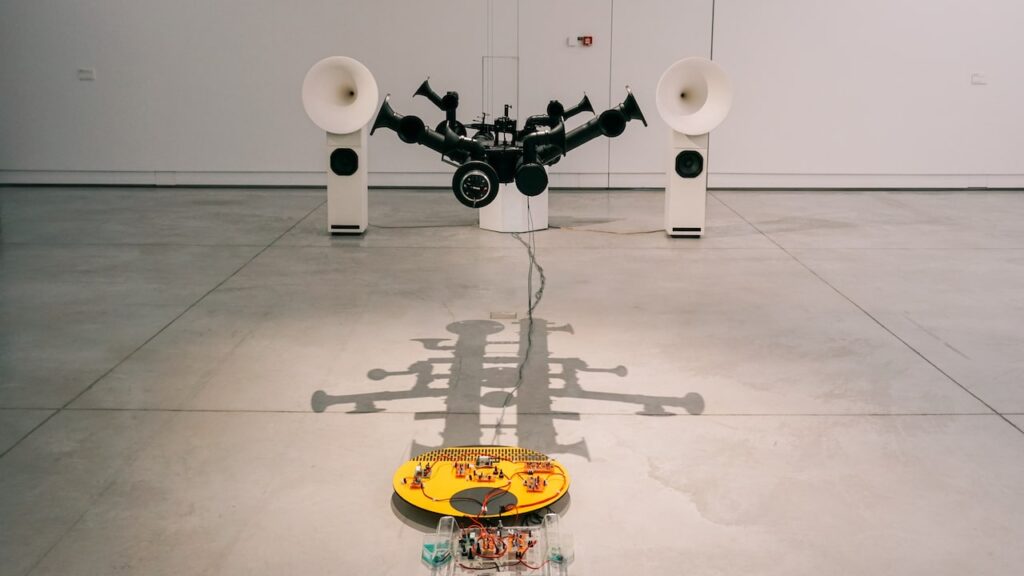
If this is not your first time on this travel blog, you probably remember how much I love architecture. However, Cukrarna is more than a beautiful building, and here is why I suggest visiting it.
It’s a place rich in history
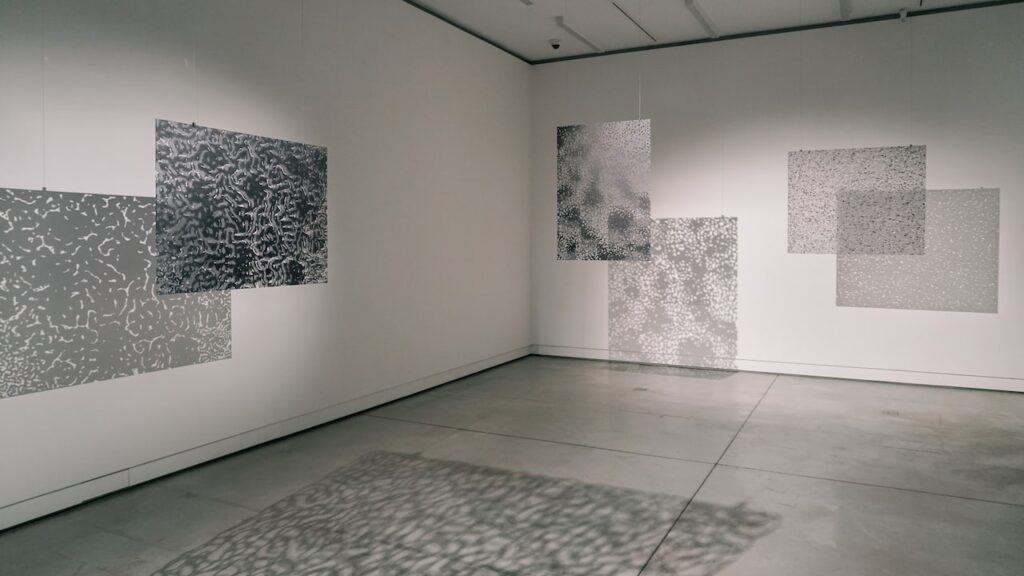
Although Cukrarna Gallery opened just a few years ago, in 2021, the building itself is much older. Moreover, it has changed usage several times throughout the past two centuries, and learning more about it has given me a different perspective.
The building dates back to 1828 and was first used as a sugar refinery. The story begins with just 22 workers and a sugar kettle, but due to the product’s popularity, it grew very fast. Within the next thirty years, it became the biggest sugar factory in the entire Austro-Hungarian Empire, which sounds like an unprecedented achievement. Sadly, the factory’s story was interrupted in the summer of 1858 after a fire destroyed the building. Around this time, sugar started to be produced from beet, and this contributed to the production’s decay.
Later, the once-famous building became an army barracks, but this also changed. In 1895, an earthquake destroyed parts of the Slovenian capital, and many people started calling the immense building home. Among the new tenants were artists and writers like Dragotin Kette and Josip Murn—and this was probably the building’s first contact with the arts. However, due to the building’s decay, it soon became impossible to live in it, and by the end of the 20th century, it felt almost like a shame to live there.
Cukrarna Gallery is an architectural gem
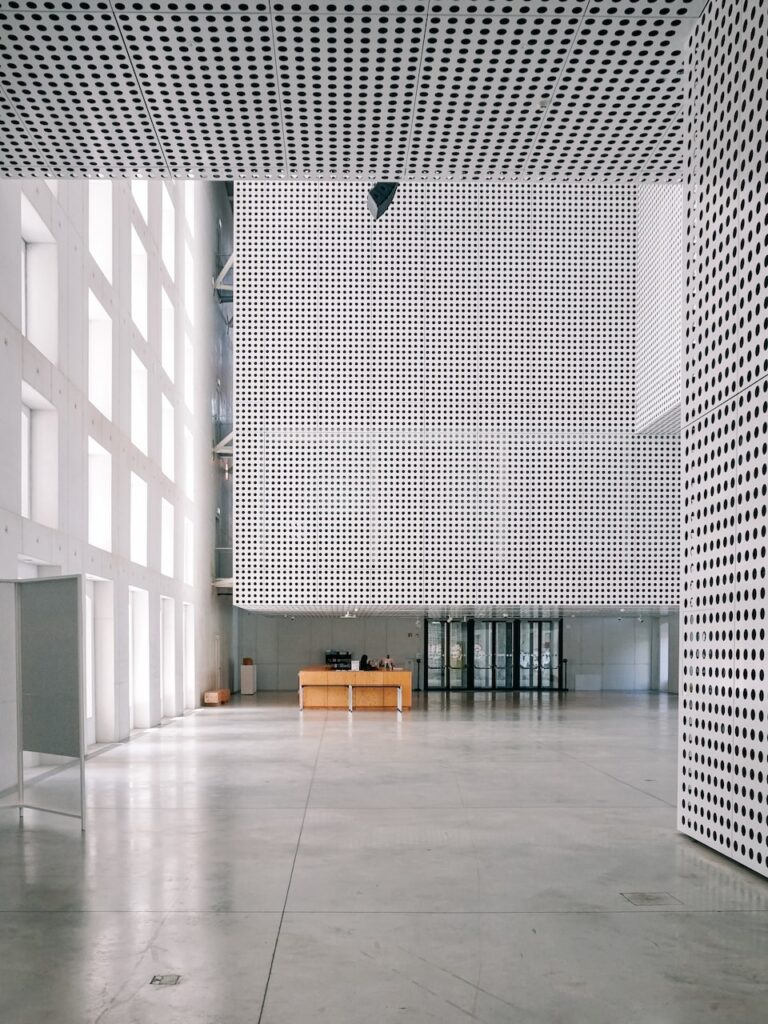
Luckily, in 2008, the city of Ljubljana purchased the building, and Scapelab carried out its renovation. The approach was to preserve the building’s significance while offering a contemporary look. For example, one of the most iconic elements is the 318 windows, and all of them remain intact. Cukrarna nowadays has four different gallery spaces, and they will remind you of white cubes. Perhaps this is a tribute to the building’s sugar past.
Strolling through Cukrarna’s space feels mindblowing due to the high ceilings and the industrial style of the building. You can use the stairs or a lift to visit each of the gallery’s floors, and it’s hard to imagine that this art hub once hosted a sugar factory. For architecture lovers, I believe it’s a must-see -and the same goes for aspiring Instagrammers.
And here’s a lesser-known fact: Cukrarna was never demolished due to its status as Ljubljana’s biggest building, exceeding 5,600 square meters (~60,200 square feet).
It hosts high-quality, contemporary art exhibitions
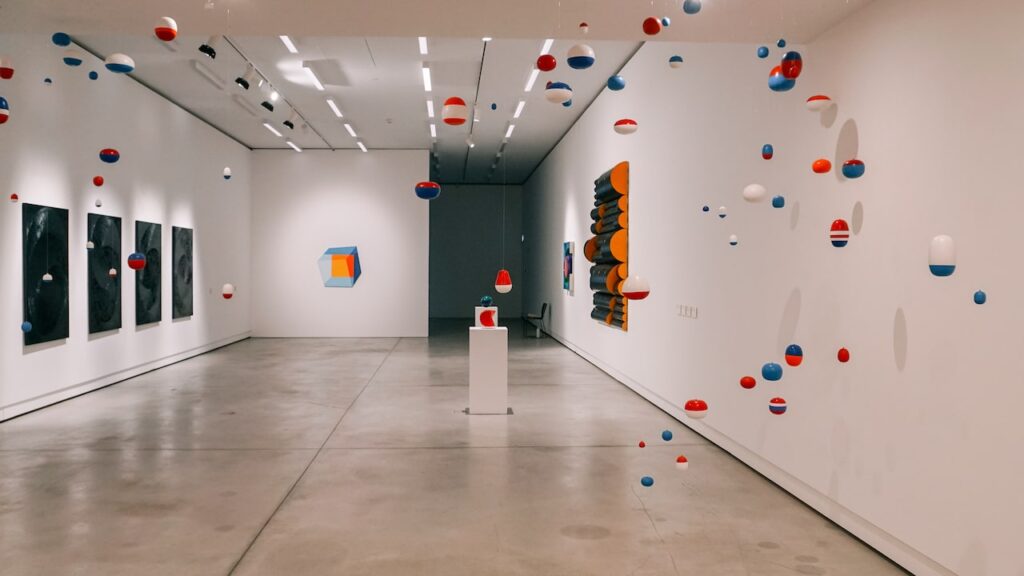
Ljubljana is home to plenty of art institutions, and a new entry might find it challenging to compete with them. In the first place, I decided to visit the Cukrarna Gallery to admire the stunning building; the exhibitions didn’t disappoint me. On the contrary, I discovered emerging artists and was thrilled by their modern approach.
I was particularly impressed by the work of Tarek Atoui, called Standing Waves. It explores sound through innovative instruments, participatory performances, and installations. Featuring pieces from his projects The Wave, WITHIN, and The Whisperers, the exhibition presents a dynamic sound environment crafted from field recordings in the ports of Athens, Singapore, and Abu Dhabi, electronic sounds, and nine custom-made instruments. Atoui’s work emphasizes collective participation and the sensory experience of sound, transforming the gallery into a soundscape. The title itself reflects the artist’s focus on the physical and sensory dimensions of sound.
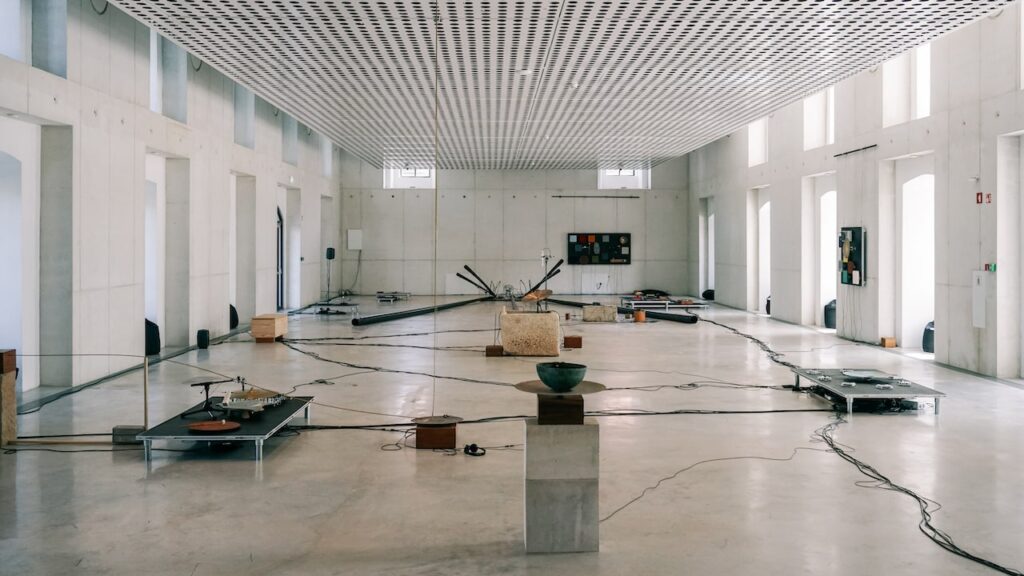
Also, the Extended Vision group exhibition on the upper floors of the art gallery featured several fascinating artworks. The exhibition explores perception through the work of artists who use paintings, reliefs, photographs, videos, objects, and installations to challenge and enhance our visual experience. It highlights how visual perception involves imagination, not just the eyes. In addition, the artworks create illusions using color, light and sound to engage viewers physically and emotionally.
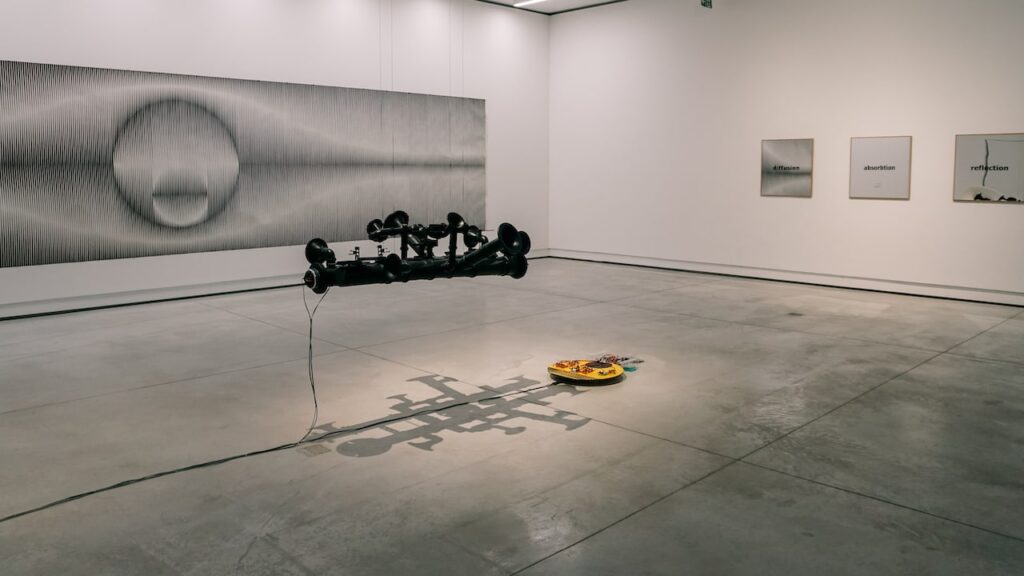
Overall, I had a fantastic time at the Cukrarna Gallery, and I highly recommend visiting it: it’s a cultural hub located in a fantastic building at the city’s edge—is there really anything more to ask?
Cukrana Gallery: Information for your visit
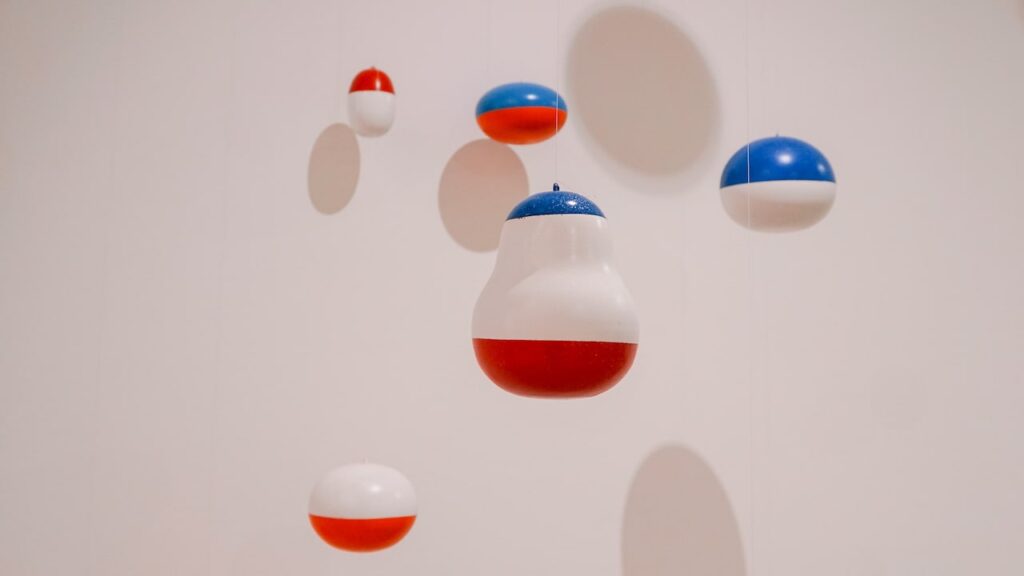
In this section, you’ll find information about your visit to the Cukrarna Gallery in Ljubljana.
Opening hours
Cukrana Gallery is open Tuesday through Sunday between 10 a.m. and 7 p.m. It remains closed on Mondays.
There’s also an atmospheric cafe on-site that stays open late.
The Gallery is also accessible to people with disabilities.
Tickets
If you purchase a Ljubljana City Card, you can visit the Cukrarna for free.
Tickets for adults cost 8 euros, and the reduced tickets cost 6 euros.
Location
The Gallery is at Poljanski nasip 40, 1000 Ljubljana. You can see here the exact location on Google Maps.
Buses 2, 11, and 20 stop at the nearby “Cukrarna” bus stop.
Cukrarna Gallery: Conclusion
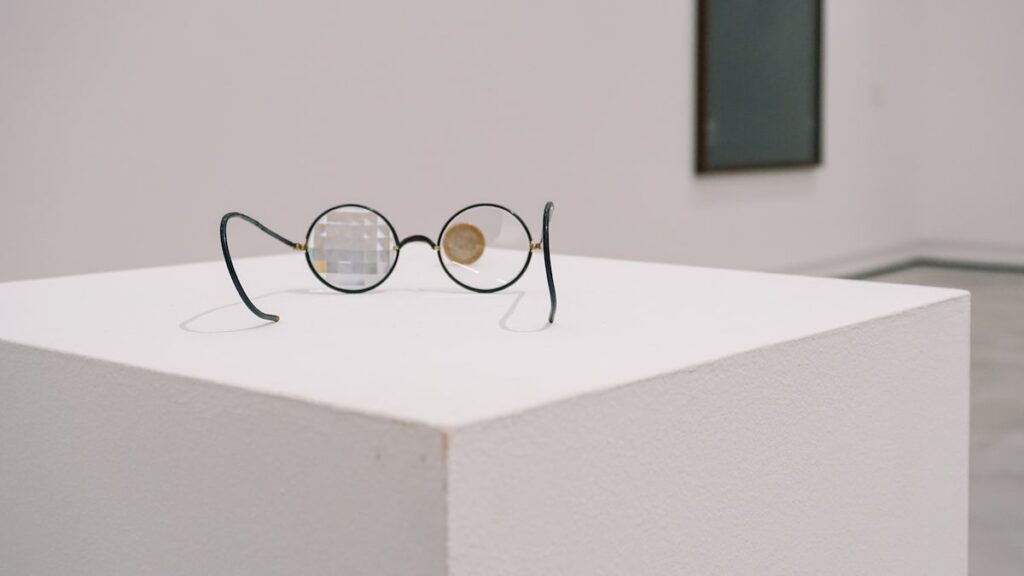
The Cukrarna Gallery in Ljubljana offered me an immersive experience. The building’s almost 200-year history and the stories associated with it provide a deeper understanding of its usage and the historical context of the era. And while history is always a welcome addition to every building, the conversion of the old sugar refinery into a modern art gallery is something to admire. An architectural marvel of Ljubljana, the Cukrarna Gallery will impress you with its details and will fill in your camera roll: at times, you’ll only want to shoot photos.
And then, it’s the art, of course. After all, museums and galleries should be mainly judged for their exhibitions. Cukrarna Gallery ticked this box with ease due to its minimal and contemporary style of presenting its exhibitions. The work by Tarek Atoui and the group exhibition about perception were both really well executed. I’m convinced that any future Cukrarna exhibitions will be of the same quality.
That said, don’t hesitate to visit it -and don’t sacrifice Cukrarna for a more famous museum in town. It is a must for architecture and art lovers, and you’ll definitely have a great time in the gallery.
More about Ljubljana: The ultimate Ljubljana guide, Ljubljana Boat Tour Review, Jože Plečnik House
Pin it for later
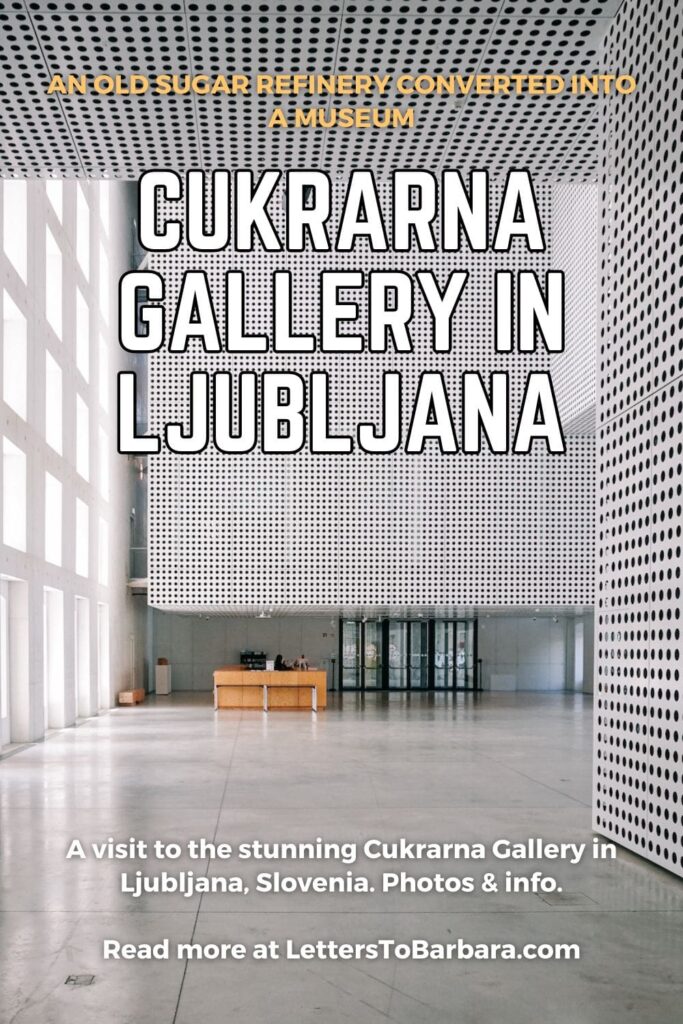
Sharing is caring. Please share this article about the Cukrarna Gallery in Ljubljana, Slovenia, with your friends.
Last Updated on September 19, 2024 by George Pavlopoulos
